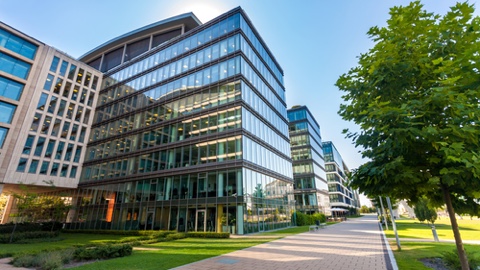
An important component of the smart city is the smart building – a facility that incorporates advanced automation and integration to measure, monitor, control, and optimize operations and maintenance. In existing buildings, technologies are deployed as retrofits or extensions to existing infrastructure to better control the energy management equipment in the facility. As these facilities are transformed into smart buildings, they become increasingly instrumented, controlled, and automated, and operators and key decision makers rely more heavily on the analytics and data management aspects of smart building solutions to make better decisions. The idea is that the smarter the building, the more efficient its operations and maintenance, thus driving down costs, energy consumption, and the facility’s environmental footprint.
A number of web-enabled smart building features are now available that can make a big impact on public buildings:
- Optimized HVAC systems – a network-based HVAC system that automatically calculates the best ways to heat, cool and ventilate a building based on the time of day can bring about enormous savings in water usage and cost and achieve major CO2 reductions;
- Managed electricity reductions – many utility companies offer various “demand response” incentives designed to help ensure system reliability during peak demand periods. Smart building systems can be used to activate the scheduled reductions and to efficiently certify that reductions have occurred;
- Maximized building security – one security firm offers a visitor management service that enables businesses to use visitor registration directly from their email client, thus expediting the visitors’ check-in process. Wireless intrusion detection systems use mobile transmitters and motion sensors to automate security 24/7;
- Smart sensors for lighting – systems can align lighting controls, motorized window shades, sensors, digital ballasts, and LED drivers,, bringing about significant savings.


